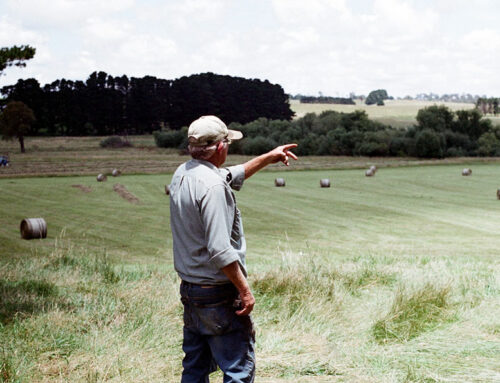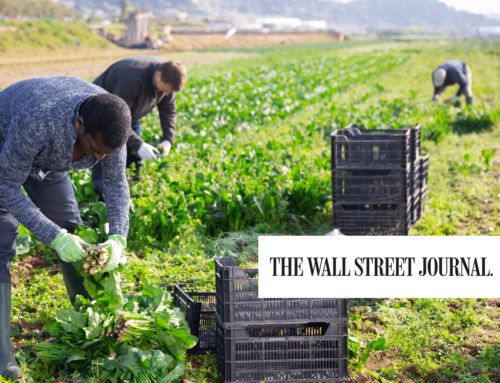We’re going to say it out loud: It’s time for the farm bill and SNAP to get divorced.
The 2018 farm bill debate underlines how the once-productive partnership between nutrition advocates and farm subsidy proponents has turned into a legislatively miserable relationship. There is a path forward to cost-effective, transparent federal safety nets that meet the needs of food insecure households, farm businesses, and taxpayers. Remove nutrition programs from the agriculture committees and the farm subsidy special interests they serve.
Like many romances, there is a backstory. Washington has routinely passed legislation to aid farming and ranching businesses since the Agricultural Adjustment Act of 1933 was adopted to assist farmers whose livelihoods were, figuratively and literally, blown away by the Dust Bowl. At the time, a third of Americans farmed and typically had lower incomes than non-farmers.
By 1973, the number of congressional districts dependent on farming were shrinking, but farm bills had grown in cost and frequency. How to maintain support for the shrinking farm constituency? By adding food assistance – at the time, food stamps – to the package. The shotgun marriage of farm aid and food stamps meant rural and urban members of Congress came together to get the farm bill over the finish line. This has been true for every bill since, including the most recent Agricultural Act of 2014.
But it’s been an increasingly inequitable and unhappy partnership. For starters, nutrition programs are used as a shield to avoid scrutiny of inefficiencies, waste, and even outright fraud running rampant in the so-called farm safety net. Against the farm bill? Don’t you care about food insecure families?
You have to pay attention to the numbers to understand this con game. Despite its name, 75 cents on every farm bill dollar is actually spent on the Supplemental Nutrition Assistance Program. Increased eligibility due to rule changes and the Great Recession swelled SNAP rolls. Nine years into an economic recovery, SNAP costs are still above pre-recession levels. This has led to many conservatives advocating for a robust debate — which should happen — about whether SNAP is appropriately targeted.
But the SNAP debate is a distraction: While the House debated tightening the belt on SNAP, it let out the seams of the business subsidy side of the bill. The Senate has not been fooled. Hence the current impasse, with the chambers unable to agree on a new 2018 farm bill, which is worth about $870 billion.
They have yet to resolve differences on any portion of the farm bill. The Senate produced a bill hewing close to the status quo on SNAP. The House meanwhile, passed a bill that, among other things, expands an existing requirement that able-bodied individuals seek work to be eligible for SNAP and funnels billions into an untested U. S. Department of Agriculture-run job training program. Both of which are non-starters in the Senate.
But that’s just fine with the House Agriculture Committee. It is holding up the specter of major reform, knowing full well it will never happen, to distract people from its real ends: expanding the federal taxpayers’ role in footing the bill for padding the pockets of some farmers. Because while the House bill increases work requirements for SNAP recipients, it effectively eliminates them for people claiming to be farmers, and plants a number of other costly special-interest-pleasing provisions.
The bill expands the definition of “family member” to include “first cousin, niece, and nephew.” That change would allow more people to use the “active management only” loophole to claim interest in a farming operation. But “active management” includes “Facetime farmers” who never step foot on the field, yet are eligible for up to $125,000 per year ($250,000 if they are married).
Want more? The bill makes it easier for farms to reorganize as pass-through entities to plow through that $125,000 payment limit. It requires taxpayers reimburse companies for all “reasonable and actual costs” in developing new crop insurance policies, even if USDA finds the claimed actual costs, well, not reasonable. Taxpayers will also guarantee peanut farmers $535 per ton, even though markets fell short of that seven of the last nine years with no market generated price increase in sight. And on and on.
At Taxpayers for Common Sense, we believe all federal safety nets should be cost-effective and transparent enough to assure taxpayers that programs are not being abused. They should respond to need, cost more when times are bad and less when the good times roll. And all parties, be they spending recipients, lobbyists, or members of Congress, should be held accountable for producing concrete, measurable results.
Absent the convenient, legislatively manipulative noise around SNAP, the 2018 farm bill doesn’t do any of that. Meanwhile, what may have once been a productive partnership is now an inequitable relationship of political acrimony, bad policy, and gridlock. Divorce court would benefit all parties. It’s the only way we’ll ever see progress in making safety nets great again.











Get Social